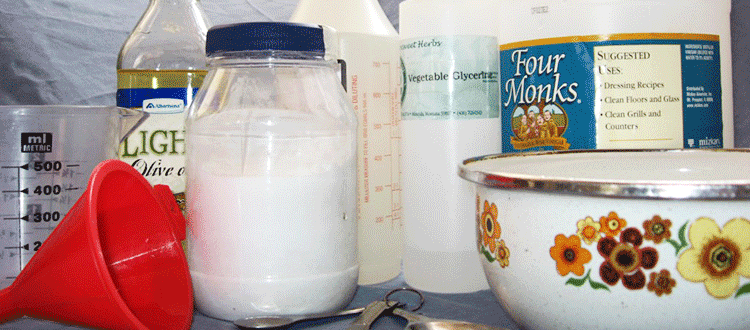Tips for Avoiding Chemicals Associated with Cancer Risks
 |
| Jamie McConnell Director of Programs & Policy |
In one way or another cancer invades all of our lives — whether it’s your diagnosis, a family member’s, or a friend. In my relatively short time on this earth (35 years) my grandfather was diagnosed with bladder cancer and a good friend of mine in his early 30’s succumbed to melanoma. As I get older I know that number will only grow. One of the many frustrating (and terrifying) things to me about cancer is there are so many unknowns. While we do know that 5-10% of all cancers are genetic that leaves 90% of diagnoses unexplained.
One of the potential causes of cancer that is not being taken seriously enough is exposure to toxic chemicals in the home. In 2010 the President’s Cancer Panel released a report Reducing Environmental Cancer Risk: What We Can Do Now that acknowledged the “true burden of environmentally induced cancer has been grossly underestimated.” One of the report’s recommendations included the need to put in place stronger regulations that will protect Americans from chemicals linked to cancer.
Most people assume that our government requires chemicals to be tested for safety before they are used in products we come into contact with every day like furniture, food containers, cosmetics, and even children’s toys. The fact is there is very little oversight of chemicals used in household products.
The law that is supposed to regulate all chemicals on the market, the Toxic Substances Control Act, is failing to protect us from chemicals that may give us cancer. Since the law was enacted in the 1970’s only 200 chemicals have been evaluated for safety out of the 85,000+ chemicals on the market. As a result, chemicals with strong links to cancer like BPA and flame retardants are LEGALLY allowed in products we use in our home every day.
What we need are stronger laws in this country that will require chemicals to be proven safe BEFORE they are allowed on the market. However, it shouldn’t be a surprise to anyone that changing the status quo through policy changes on the federal level is like watching a snail race to the finish line.
Thankfully, there are things you can do now to protect your health from chemicals linked to cancer. These tips are taken from Women’s Voices for the Earth’s Ten Steps to Reduce Toxic Chemical Exposure factsheet.
1. Make Your Own Cleaning Products
- It’s easy, fun, and cheap to make non-toxic cleaners from safe and effective ingredients like vinegar and baking soda. Find recipes here.
THE FACTS: Certain chemicals in cleaning products have been linked to reduced fertility, birth defects, increased risk of breast cancer, asthma, and hormone disruption.
2. Avoid Synthetic Fragrance
- Look for cleaners, laundry detergents, and personal care products labeled “fragrance-free” Warning: “unscented” does not mean fragrance-free!
- Discontinue use of air fresheners.
- Click here for tips to reduce odors around the home.
THE FACTS: Synthetic fragrance can be made up hundreds of chemicals, all of which are kept secret from consumers. Common fragrance chemicals include phthalates (reproductive and developmental harm, testicular cancer) and synthetic musks (break down the body’s defenses against other toxic exposures, linked to increased risk of breast cancer).
3. Give Your Personal Care Products a Makeover
- Read the label to avoid chemicals like parabens, sodium laureth sulfate, and oxybenzone.
- Check the Skin Deep database at www.cosmeticsdatabase.com to find safer products.
THE FACTS: Over 12,000 chemicals are used in personal care products — 89% of them haven’t been reviewed for safety.
4. Go “BPA-Free”
- Ditch the canned foods and opt for fresh or frozen fruits and vegetables instead.
- Seek out products from the few companies now using BPA-free can liners like Westbrae Natural, Hunt’s, Healthy Choice and H.J. Heinz.
- Look for plastics labeled “BPA-free.”
THE FACTS: Bisphenol-A (BPA) is commonly found in can liners and plastic products. BPA exposure is linked to a host of hormone-related health impacts such as increased risk of cancer, infertility, obesity and diabetes.
5. Watch Out for Triclosan
- Avoid anti-bacterial hand soap with triclosan listed on the label.
- Reduce your use of disinfectant products.
THE FACTS: Triclosan is a hormone disruptor that builds up in our bodies, and it’s been found in blood and breast milk. Studies show that it’s actually no more effective at removing germs or preventing illness that plain soap and water.
6. Choose Plastics with the Recycle Symbols #4 & #5
- Look for plastic products with these symbols signifying PVC-free plastics.
- Use glass jars or bowls to store food.
- Never microwave plastic.
THE FACTS: Polyvinyl chloride (PVC), known as the poison plastic, is found in plastic products from toys and cookware to shower curtains. PVC is linked to hormone disruption, reproductive and developmental harm, and other serious health problems.
7. Keep Chemicals Out of the House
- Take of your shoes before entering your house to avoid tracking in oils and chemicals from the street outside.
- Use a door mat to catch dirt at the door.
- Dust with a micro-fiber cloth or wet cloth and vacuum your house regularly (with a HEPA-filter vaccuum if you can).
THE FACTS: Shoes can track in toxic chemicals like lawn pesticides, coal tar from a driveway, etc. Dust carries harmful chemicals that shed off of household furniture, electronics, and other household products.
8. Turn Down the Heat on Non-Stick Cookware
- Keep the stove at or below medium heat when using Teflon or non-stick cookware.
- Opt for cast iron or stainless steel pans for cooking when possible.
THE FACTS: Teflon releases perfluorooctanoic acid (PFOA) when heated to 450 degrees. PFOA is linked to developmental harm and cancer.
9. Ask Your Senators to Support Strong Chemical Policy Reform
- Contact your congressional representatives today and ask them to support policies that protect the health of our families!
THE FACTS: While we can do things to help limit our exposure, we can’t shop our way of of this problem. Supporting new legislation that requires chemicals to be tested for safety before they’re placed in products we use every day is the systemic change we need.
10. When possible, try to eat organic food.
- Check out the Environmental Working Group’s Guide to Pesticides in Produce to find veggies and fruits that are low in pesticides (after all, not everyone can afford to buy organic all the time!)
The Facts: Fruits and vegetables can contain harmful pesticides linked to cancer.
Here’s to staying healthy and cancer free.



